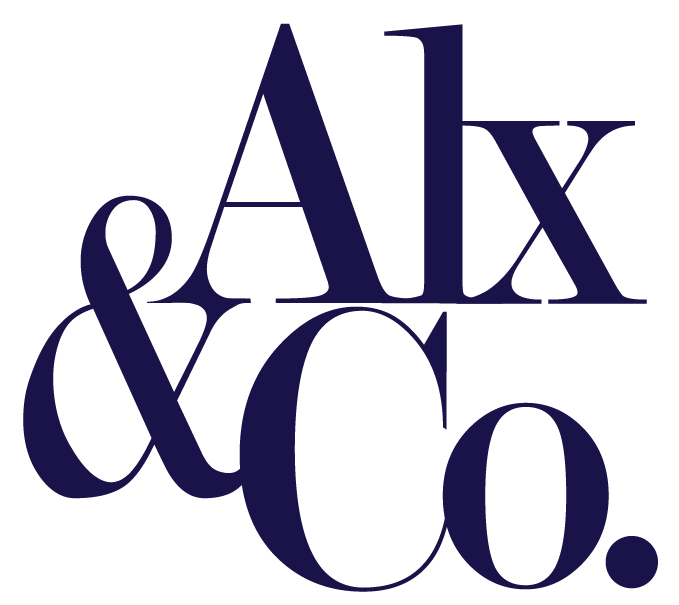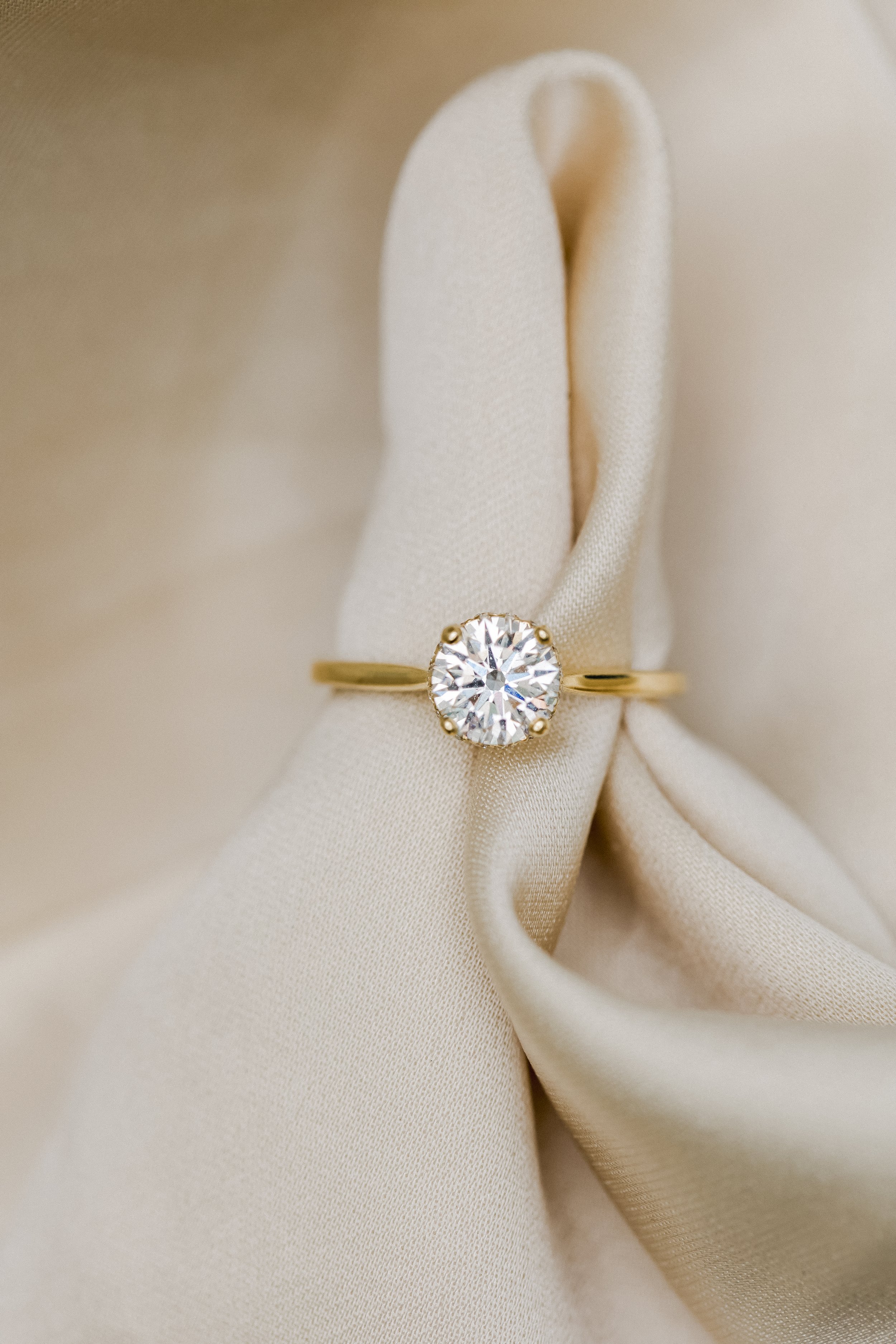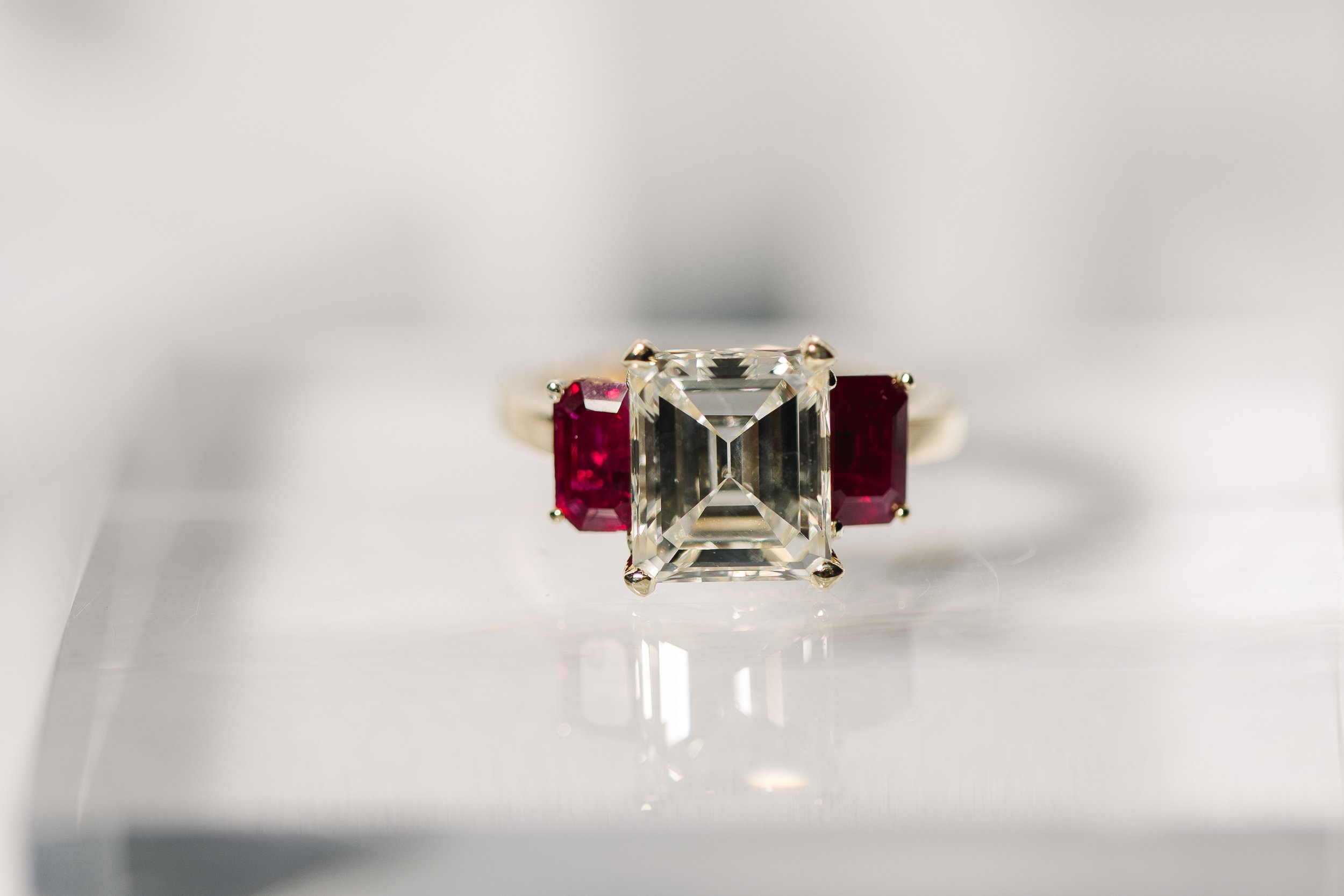Sustainable and Ethical Sourcing: What to Know Before You Buy
Sustainable and ethical sourcing are incredibly important considerations when deciding where and how to go about a major life purchase such as an engagement ring, but we’re the first to admit that the jewelry industry in general can be pretty inscrutable when it comes to understanding exactly how these terms apply. If we’re taking a generous view, one could argue that sustainability and ethical norms can mean very different things to different people, so protocols and certifications may not always be the most appropriate way to designate when something qualifies as “sustainable” or “ethically sourced”. If we’re taking a less generous view, in the end the fine jewelry industry is 100-percent a product of sophisticated, deeply engrained marketing and therefore the information available to most consumers will necessarily come from biased sources trying to convince you to buy X (from them). Indeed, that’s exactly what this blog post is, right? I am a jeweler, after all, and I do make and sell fine jewelry that I hope you will one day buy. But, our model of business is purposefully structured in a way that leaves the decision of what is best for each project ultimately up to the client. We want our clients to feel like they can trust our information and knowledge as transparent and honest because, in the end, we hope that client will come back for future work. That is one primary difference between buying from a store that sells jewelry versus working with a jeweler: one is invested in the purchase, the other is invested in the relationship.
So, if you’re still reading this post then you must be invested in this relationship :) Let’s therefore break down some of the key terms and differences in sustainable and ethical sourcing models:
Lab created diamonds
Lab created diamonds are great - we use them ourselves in many pieces and we think it’s fantastic to shake loose the natural diamond industry from centuries of pretty horrible behavior and price gouging. That being said, lab diamonds are marketed by certain jewelry stores as inherently sustainable or more ethical than their natural diamond counterparts and this simply isn’t true. There is a lot of greenwashing going on with lab diamonds and seeing that greenwashing come from large, PI-funded companies that overtake your Google search the moment you even think of getting engaged can be a bit frustrating. The fact is, lab created diamonds:
use a tremendous amount of energy for production
are primarily produced in China, India, & Russia
even if they are grown in the US, chances are the diamonds have been cut in India or China since this is where the absolute, vast majority of diamonds are cut and polished
Certain US-based vendors promote certified carbon-neutral lab created diamonds, which is great. But, carbon neutral can simply mean that carbon offsetting is taking place. This is a complicated process that can’t be summed up with a nice certification (we think).
Big-box jewelry stores like Brilliant Earth are not using USA made lab created diamonds, and they are vague about from where their lab diamonds are actually sourced. With the volume of diamonds that they sell, it is impossible that they aren’t working with Russian or Chinese vendors for these diamonds. This isn’t necessarily bad, depending on what you value in your diamond. But their marketing is disingenuous to lead you to believe that your lab created diamond is inherently ethically “better”.
Our Ready-to-Wear Audrey ring is set with a USA-made lab created diamond with no post-production treatments applied.
Recycled gold
Many major fine jewelry producers are now using this terminology in their marketing but there is absolutely no governance that regulates who gets to call something “recycled”. This is a way for jewelry sellers who want you to buy more jewelry will convince you that your purchase is helping the world. Think about it this way: if a large manufacturer is claiming that all their jewelry - all thousands and thousands of pieces they make - is manufactured using recycled gold… does it mean anything? If your purchase is contributing to a wasteful, large-scale business model that relies on more and more production and consumption to succeed, does it matter if the gold was somehow “recycled” before it made it into your earrings?
Note: we do state that we work with recycled gold, but what we mean is that we use gold provided by clients for their own pieces to fabricate a new piece in our own workshop. This means that your gold is being melted by hand and then reshaped into something different. This is true recycled gold, in a small-scale production model.
Not all creations are a good candidate for your recycled gold, but we can walk you through what we recommend. Take a look at this post we ran about using your heirloom gold for hand-fabricated designs.
Recycled diamonds
A recycled diamond simply means that you are sourcing a natural diamond that has been set in a piece before your own. If you are lucky enough to have an heirloom diamond that you can use for your design, then this is an amazing way to imbue history and meaning into a new piece. If you don’t have family gems to work with, you still have options for recycled diamonds. We work with a vendor that specializes in recycled diamonds, and you can often find a nice variety of cuts and quality to select from. When we have a client who cares about sustainable sourcing from a low-impact environmental perspective, we feel that recycled diamonds offer the best option. There is no present-day mining required (that ship sailed, shall we say) and the process is significantly less energy-intensive than lab diamond production. These diamonds are certified, often by GIA, and are indistinguishable from their modern-mined counterparts. This is really only available for natural diamonds as there is presently no market for recycled lab created diamonds.
A custom designed emerald cut recycled diamond and heirloom ruby ring, Alx&Co.
Canadian diamonds
Canada has a few diamond mines that produce high-quality, gem-worthy diamonds. The Canadian government has strict labor standards and the communities in which these mines are constructed receive substantial economic investment: all good things. The trade is highly regulated, so you can generally assume that the sourcing is true when you are buying from trusted vendors. That being said, diamond mines have a huge environmental impact (just Google “Diavik diamond mine” and look at pictures. It’s huge, and located in what used to be pristine native territories). Also, DeBeers owns a number of these mines so if you are hoping to circumvent DeBeers in your sourcing, you need to be more careful.
Custom Alx&Co. sourced Canadian diamond engagement ring
“Direct to consumer”
It feels like every day, a new fine jewelry line is launched and somehow, magically, they all “remove the middle man” and use ethical sourcing and cost significantly less than what we can sell. We caution you to look skeptically at these claims.
First of all, the “middle man” in this scenario is the jeweler who repairs and maintains your piece for years to come. Try bringing your ring to Brilliant Earth to be resized and see what they say. If you made your ring with them, they will send it out to a mass-production facility halfway across the country to be resized, and it will take six weeks. The same goes for Tiffany and they probably use the same warehouse in Tennessee for all their work. If you didn’t make your ring with them, good luck! They probably won’t work with it.
Do research into the ethical claims they are making. There is a lot of showmanship going on! Again, please consider that large-scale production models funded by private equity don’t tend to have the best track record when it comes to being truthful about ethical practices.
Do the math here: how, exactly, can a pair of diamond earrings cost so much less with an online retailer than what you can find in a jewelry store like ours? Well, first of all, they definitely don’t pay their factory workers in China or India what we pay our team. They benefit from mass-production scalability which is inherently more transactional. They don’t employ bench jewelers and goldsmiths in their shops to service your pieces for a lifetime. They can’t achieve true custom design, because they work off of pre-designed templates. They won’t work with your heirloom gemstones and they train their staff to push sales, not service.
Feel Right About Your Purchase
One thing that we are always conscientious about is that each client we meet will have their own view on what the “right” decision is for them. For some clients, the right decision simply comes down to convenience and cost, and we get that. I would encourage that client to do their research and make sure they fully grasp the services that the store from which they are buying will provide. Saving a few hundred dollars today might end up costing you in the end if your ring needs to be resized or a custom wedding band is needed. For those who have a more complicated approach to buying the right engagement ring, I encourage you to really look skeptically at these amazing claims that big-box stores are making. It is absolutely a business model to underprice the product to grow market share (i.e. close down competition) while excluding all service offerings. Keep in mind that if you purchase pieces from big names under the assumption that you’ll always be able to find a local jeweler to size and care for it, then you’ll be in for an unpleasant surprise of both cost and availability of services. Small jewelers aren’t “middle men,” they are people who work in your neighborhood and pay taxes to your state and local governments, and they are training the next generation of jewelers to take care of your piece. Invest in them, and you’ll be happy (and feel ethically sound) in the long run, no matter what sourcing path you choose for your ring.




